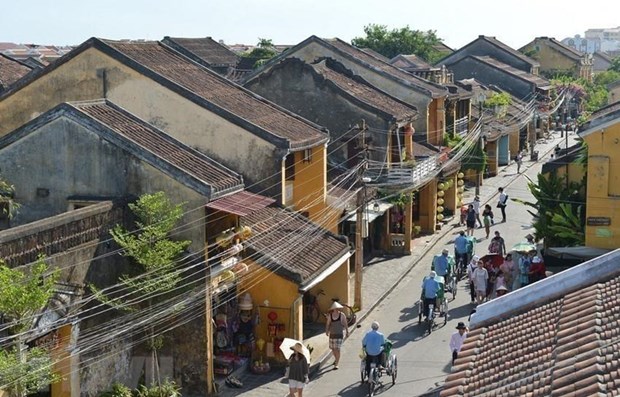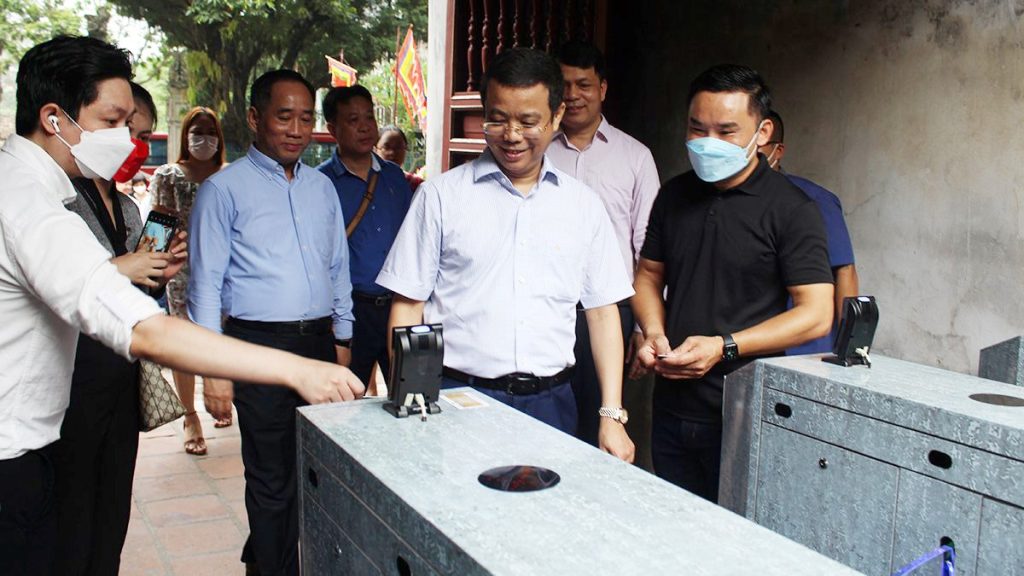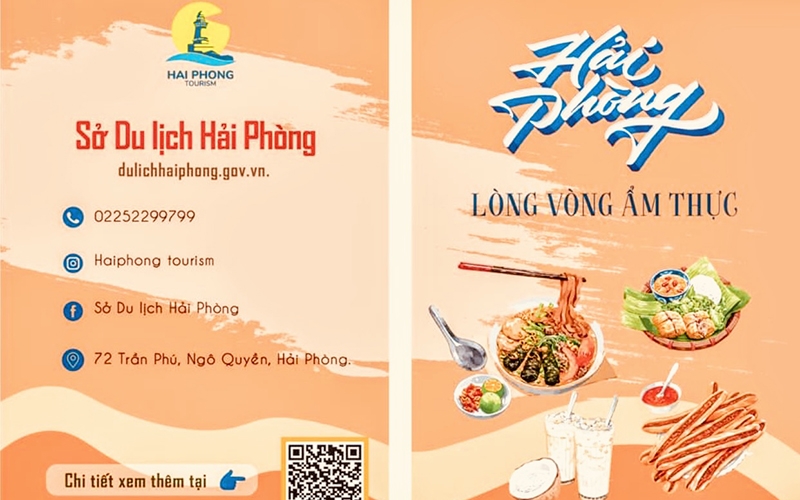(TITC) – The criteria 3, 4, 5 of checklist prefer to improve the quality of environmental assets and values; interaction between the local community and guests; and quality tour and guiding services
Criterion 3: Contribution to conserve and promote sustainable environment
Sub-criterion 3.1: Natural resources are conserved
| Indicators | Fully complies | Partly complies | Does not comply | Not applicable |
| Minimum requirements | ||||
| 3.1.1 Natural resources & environmentally sensitive sites and their community significance are identified, planned, documented & endorsed by relevant communities. | ||||
| Advanced requirements | ||||
| 3.1.2 A fund exists to support community-based conservation programs & actions. | ||||
| 3.1.3 Awareness and capacity building programs exist to educate/provide information to relevant stakeholders to protect the natural resources. | ||||
| Best practice requirements | ||||
| 3.1.4 Local rules and regulations exist to ensure the protection and presentation of nature. | ||||
| Total minimum requirements | ||||
| Total advanced requirements | ||||
| Total best practice requirements |
Sub-criterion 3.2: Environmentally sustainable practices are promoted
| Indicators | Fully complies | Partly complies | Does not comply | Not applicable |
| Minimum requirements | ||||
| 3.2.1 A fund is available to support community-based environmental improvement action. | ||||
| 3.2.2 A locally appropriate solid waste management system exists that applies avoid, reduce, reuse, recycle principles and hygienic handling of putrescible waste (e.g., composting). | ||||
| 3.2.3 Locally appropriate wastewater management uses technologies that minimise risk to human health and environmental impact. | ||||
| 3.2.4 Practices ensure that all rules, regulations and laws relevant to environmental protection are followed. | ||||
| Advanced requirements | ||||
| 3.2.5 Solid waste generation is actively discouraged (e.g., through encouraging refilling of water bottles with treated water). | ||||
| Best practice requirements | ||||
| 3.2.6 Environmental information and education programs are available for hosts, guests and the community. | ||||
| 3.2.7 Low carbon energy sources are used within the CBT area. | ||||
| 3.2.8 Plastic free concept is actively encouraged within the community. | ||||
| Total minimum requirements | ||||
| Total advanced requirements | ||||
| Total best practice requirements |
Criterion 4: Encouragement of interaction between the local community and guests
The success of CBT initiatives depends on visitor satisfaction with experiences and reciprocal benefits flowing to host communities that result in their satisfaction.
Sub-criterion 4.1: Guest and local community interaction exists
| Indicators | Fully complies | Partly complies | Does not comply | Not applicabl e |
| Minimum requirements | ||||
| 4.1.1 Environmental and cultural information is included in the interpretation of the community and its surroundings. | ||||
| 4.1.2 Policies and actions ensure safety and security for visitors. | ||||
| Advanced requirements | ||||
| 4.1.3 Codes of conduct exist for community, hosts and guests. | ||||
| 4.1.4 Tourist expectations are managed by providing accurate information in marketing initiatives. | ||||
| 4.1.5 A quality control and improvement system exists, including a process to obtain visitor feedback on their CBT experiences. | ||||
| Best practice requirements | ||||
| 4.1.6 A program of cross-cultural communication and understanding exists. | ||||
| 4.1.7 Opportunities exist for tourists to contribute to local activities alongside community members. | ||||
| 4.1.8 The quality control and improvement system is evaluated weekly and reported annually to Community members. | ||||
| 4.1.9 Market trends and movements for future developments are followed to enhance the quality experiences for both host and guest. | ||||
| Total minimum requirements | ||||
| Total advanced requirements | ||||
| Total best practice requirements |
Sub-criterion 4.2: Sustainability of community-based tourism products
| Indicators | Fully complies | Partly complies | Does not comply | Not applicable |
| Minimum requirements | ||||
| 4.2.1 Transparent and fair pricing exists for visitors with adequate returns on community investments. | ||||
| Advanced requirements | ||||
| 4.2.2 Positive returns on investment exist in terms of social, cultural, environmental and economic outcomes. | ||||
| Best practice requirements | ||||
| 4.2.3 Target market segments are identified with their servicing needs. | ||||
| 4.2.4 Appropriate & unique products & services are in place to service identified markets & protect & enrich environmental & cultural assets, products & services. | ||||
| 4.2.5 A targeted & cost-effective marketing program attracts identified markets. | ||||
| Total minimum requirements | ||||
| Total advanced requirements | ||||
| Total best practice requirements |
Criterion 5: Quality tour and guiding services
A community-based tourism tour is an activity organised by community members for visitors to see and learn about local community, culture and environment.
Local guides will be community members who have been living in the community and recognised by the community as a trust-worthy person able to represent and communicate community interests. They must have good knowledge, skill, experience and attitudes, with preference given to those with minimum qualifications required by national regulations.
Sub-criterion 5.1: Ensuring local guide quality and expertise
| Indicators | Fully complies | Partly complies | Does not comply | Not applicable |
| Minimum requirements | ||||
| 5.1.1 Guides are community members or approved by a CBT committee; they are recruited based on appropriate levels of knowledge, physical health and fitness for proposed guided activities. | ||||
| 5.1.2 Guides possess or can demonstrate commitment to developing sound knowledge of the local environment and culture; including history, cultural traditions, geography, flora and fauna and cultural/heritage sites, and sustainable tourism principles. | ||||
| 5.1.3 Guides operate within the ASEAN CBT Standards and regulations of the CBT initiative and have signed and follow the ASEAN CBT Guide’s Code of Conduct (Appendix 2). | ||||
| Advanced requirements | ||||
| 5.1.4 Guides facilitate environmentally, socially and culturally relevant and sensitive experiences for visitors that are protective of natural and cultural resources and values. | ||||
| Best practice requirements | ||||
| 5.1.5 Guides have access to ongoing capacity building and training opportunities to increase their skills and knowledge of: • sustainable tourism, • interpretative guiding, • group management, • customer care/service, • communication (including cross cultural awareness/communication and verbal and non-verbal communication); • first aid and safety, • authentic local cultural traditions, integrity, identity and values, • environmental protection issues, • the guidelines and regulations of the CBT initiative, and • any other area deemed necessary by the CBT Committee. | ||||
| Total minimum requirements | ||||
| Total advanced requirements | ||||
| Total best practice requirements |
Sub-criterion 5.2: Managing tours and activities to ensure quality
| Indicators | Fully complies | Partly complies | Does not comply | Not applicable |
| Minimum requirements | ||||
| 5.2.1 Tours/activities operate within the objectives, guidelines, regulations and codes of conduct of the CBT initiative. | ||||
| 5.2.2 Tours/activities ensure visitors, at all times, observe CBT approved guidelines for interacting with the culture, natural environment and people of the community. | ||||
| 5.2.3 Tours/activities have a clearly defined: • itinerary and associated price; and • documented booking system. | ||||
| 5.2.4 Tours/activities record the visitors on tours, including departure and return times. | ||||
| 5.2.5 Visitors are informed of the tour itinerary, level of difficulty, possible hazards, safety precautions and regulations or rules that apply to their conduct on the tour. | ||||
| Advanced requirements | ||||
| 5.2.6 Tours operate on a cost recovery basis and yield a profit to the CBT initiative. | ||||
| 5.2.7 A quality control and improvement system exists, including a system for visitor feedback on the tour/activity experience, and visitors are actively encouraged to participate in the feedback process. | ||||
| 5.2.8 Tours/activities respect and contribute to the promotion and preservation/conservation of local culture and natural environment and provide current and relevant cultural information. | ||||
| 5.2.9 Tours/activities are designed to be enjoyable, educational, participatory, organised, relevant and thematic. | ||||
| Best practice requirements | ||||
| 5.2.10 The local (interpretative) guide to visitor ratio is not greater than 1:5-10. | ||||
| 5.2.11 Where relevant, tours/activities have clearly defined and documented agreements with inbound tour operators. | ||||
| 5.2.12 Tours/activities actively facilitate cross-cultural understanding and opportunities for tourists to contribute to local activities alongside host community members. | ||||
| 5.2.13 Tours provide an appropriate and specialised service for identified tourist markets and attract identified tourist markets through cost-effective means. | ||||
| Total minimum requirements | ||||
| Total advanced requirements | ||||
| Total best practice requirements |
Tourism Information Technology Center




